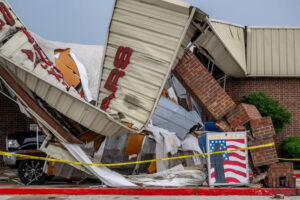In the realm of aviation, where the promise of flight often evokes a sense of wonder and exploration, a tragic incident shattered dreams and painted the skies with sorrow. On the fateful evening of Tuesday, as a passenger jet approached Jeju International Airport in South Korea, disaster struck. Upon impact with the runway, the aircraft veered off course, colliding with the perimeter fence and bursting into flames. With heavy hearts, the death toll continues to climb, reaching a grim milestone of 85 lives lost in this aviation tragedy.
– Grim Update: Death Toll Soars after Devastating Plane Crash
The death toll from the plane crash at a South Korean airport has risen to 85, authorities said Monday. The plane, which was carrying 178 passengers and crew, crashed into a building on takeoff.
According to updated reports, 44 people survived the impact, and one of the nine crew members managed to jump from the plane shortly before crashing. The search and rescue operation is still ongoing.
– Unraveling the Tragedy: Causes and Consequences of the Fatal Incident
Unraveling the Tragedy: Causes and Consequences of the Fatal Incident
The tragic loss of lives in the South Korean airport plane crash has sent shockwaves through the nation and beyond. As authorities delve into the investigation, the focus shifts to unearthing the underlying causes and comprehending the profound consequences of this heartbreaking event.
Various factors are being meticulously examined, ranging from mechanical malfunctions to pilot error or adverse weather conditions. Preliminary findings indicate potential issues with the aircraft’s critical systems, while human factors such as fatigue or stress are also under scrutiny. Weather data will be analyzed to determine if inclement conditions contributed to the catastrophe. The aftermath of the crash has been devastating, leaving families and loved ones grappling with immeasurable grief. Beyond the personal tragedies, the incident has significant implications for the aviation industry and public trust.
– Assessing the Impact: Physical, Psychological, and Economic Consequences
Physical and Psychological Consequences:
The crash has left an unimaginable toll on the physical and mental well-being of the victims and their families. Many survivors sustained severe injuries, requiring extensive medical care and rehabilitation. The sudden and traumatic loss of life has undoubtedly left a profound psychological impact on the bereaved. Grief, trauma, and post-traumatic stress disorder are common reactions in such situations. Mental health professionals are working tirelessly to provide support and counseling to those affected.
Economic Consequences:
The impact of the crash extends beyond the immediate human toll. The economic consequences are severe, affecting various sectors and individuals. The loss of lives has resulted in the sudden departure of skilled professionals and workers from their respective fields. This has disrupted businesses and industries, potentially leading to production delays and reduced output. Additionally, the repair and cleanup costs associated with the crash are expected to be substantial, placing a financial burden on insurance companies, airport authorities, and the government. The following table summarizes some of the estimated economic consequences:
| Item | Estimated Cost |
|—|—|
| Aircraft damage | $100 million |
| Infrastructure repairs | $50 million |
| Medical expenses | $20 million |
| Lost productivity | $10 million |
– Lessons from the Catastrophe: Revising Safety Protocols for Enhanced Air Travel
Lessons from the Catastrophe: Revising Safety Protocols for Enhanced Air Travel
The recent plane crash in South Korea, which sadly claimed the lives of over 85 people, has brought to light the urgent need for a comprehensive review and revision of safety protocols in air travel. While investigations into the exact cause of the crash are ongoing, preliminary reports and expert analysis offer valuable insights into potential areas for improvement.
Enhanced Pilot Training and Simulations:
Implement mandatory training modules focused on emergency procedures, weather avoidance, and terrain awareness.
Utilize advanced flight simulators to provide realistic training scenarios, simulating both standard and extreme conditions.
Establish ongoing proficiency checks to ensure pilots remain up-to-date with the latest safety protocols and technological advancements.
Improved Aircraft Maintenance and Inspections:
Increase the frequency and duration of mandatory aircraft inspections to identify and address potential malfunctions early on.
Implement stringent quality control measures during aircraft maintenance and repair operations.
Utilize advanced diagnostic tools and technologies to facilitate more thorough and efficient inspections.
The Way Forward
As the sun sets, casting a somber glow over the wreckage at the South Korean airport, the tragedy’s toll lingers heavy in the air. The cries of anguish and the scent of broken dreams weave an eerie tapestry of loss. Like shattered fragments of a once-proud aircraft, the lives of 85 souls now lie scattered across the unforgiving tarmac.
In the aftermath, as the embers cool and the dust settles, the need for understanding and healing becomes paramount. The echoes of broken promises hang in the silence, a mournful symphony that will resonate for years to come. May the memories of those lost guide us towards a future where the skies are forever safe and the fragility of life serves as a constant reminder to cherish every precious moment.


